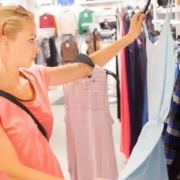How UK Textile Exports Are Thriving in Global Markets
Introduction
Dating back to the industrial revolution, when it was deemed the world’s top textile producer, the United Kingdom has a rich and storied history in textiles. Though the sector has faced difficulties over the centuries since, today UK textile exports are once again on the rise, flourishing in global markets because of innovation, quality craftsmanship, sustainable practices, and strong branding. The resurrection of the UK textile sector as a competitive force on the world stage attests to its resilience and adaptability in a fast changing global economy.
Post-Brexit Trade Strategy and Diversification
The post-Brexit economic landscape has forced the UK to rethink its trade ties and tactics. Although leaving the European Union raised first questions. It also motivated UK textile producers and exporters to expand their horizons and look for possibilities outside conventional EU markets. Trade agreements with countries including Japan, Australia, and several commonwealth countries have created new avenues for textile exports. Encouragement of the textile industry by T&A Textiles Manchester to invest in international outreach and export growth has been greatly influenced by the government’s strategic drive towards Global Britain. Which has resulted in more visibility in Asia, North America, and the Middle East.
The Rise of Technical Textiles and Innovation
The fast expansion of technical and smart textiles is among the most thrilling changes in the UK textile industry. These are fabrics meant for high-performance uses in sectors including automotive, healthcare, aerospace, and defence. Research and manufacture of textiles with embedded technologies—such as temperature control. Antibacterial qualities, and high-tensile strength fabrics—has made the UK a leader. Private companies, universities, and research organisations are working together to create new materials meeting the requirements of contemporary industries. High demand for these advanced textiles worldwide allows UK producers to access profitable and growing foreign markets that value innovation and function above price.
The Strength of British Branding
“Made in Britain” still has significance in world markets, particularly in the fashion and home interiors industries. British textiles are synonymous with elegance, quality, and legacy. Brands such as Harris Tweed, Liberty London, and Johnstons of Elgin evoke. A feeling of genuineness and legacy that attracts global shoppers seeking items with a narrative. Particularly British wool is praised globally for its warmth and longevity. Exporters are taking advantage of this by stressing origin, artisanal production techniques. And generational craftsmanship in their marketing efforts and strengthening British identity. In premium markets where customers are ready to spend more for legacy and quality, this branding approach is especially successful.
E-Commerce and Digital Transformation
Digital transformation has significantly changed how UK textile exporters connect with their clients. Now, online B2B marketplaces, virtual showrooms, and e-commerce sites allow textile manufacturers to sell directly to foreign consumers with unmatched efficiency. Digital storytelling, influencer partnerships, and social media marketing have also enabled UK companies to create worldwide audiences without requiring a physical presence overseas. Many conventional manufacturers were push to embrace e-commerce models that keep paying benefits as the COVID-19 epidemic hastened this digital change. These digital channels have helped UK textile companies reach markets formerly difficult to access because of geographic or logistical constraints.
Regional Hubs and the Return of British Manufacturing
Many areas around the UK are seeing a rebirth in textile manufacture. Areas with historical connections to textiles—such as Yorkshire, Lancashire, and the Scottish Highlands—are reclaiming their industrial legacy by means of the revival of local mills and the establishment of new manufacturing sites. Often emphasising high-end or bespoke items, these regional centres use local knowledge and training initiatives to preserve traditional skills. While combining modern manufacturing techniques. Manufacturing’s return to British soil allows exporters to keep quality control. React fast to market needs, and provide the desired “Made in the UK” label.
Fashion, Interiors, and Beyond
Although UK textiles have also found great demand in home interiors, hospitality, and automotive design, fashion still drives textile exports. Made in the UK, upholstery fabrics, drapes, carpets, and wall coverings are much sought after in foreign design circles for their beauty and longevity. Regular appearances by British textile designers in worldwide design fairs have resulted in notable international projects. Created in partnership with textile manufacturers and luxury interior brands. Including UK textiles in these sectors increases export revenue in other areas and broadens the industry outside of clothing and apparel.
Conclusion
The revival of UK textile exports in world markets is a tale of tradition meeting invention. The UK textile sector has managed to reinvent itself while remaining faithful to its identity from its historic roots in craftsmanship to its acceptance of smart technology and sustainability. British exporters are well-place to grab new chances given rising demand for quality, eco-conscious, and technologically sophisticated textiles worldwide. The UK’s capacity to change, diversify, and maintain its reputation for excellence will be more important for its ongoing success as the world market changes. UK textiles not only seem bright in the future but also resilient, relevant, and full of promise.
Visit RM connection for more informative blogs.

